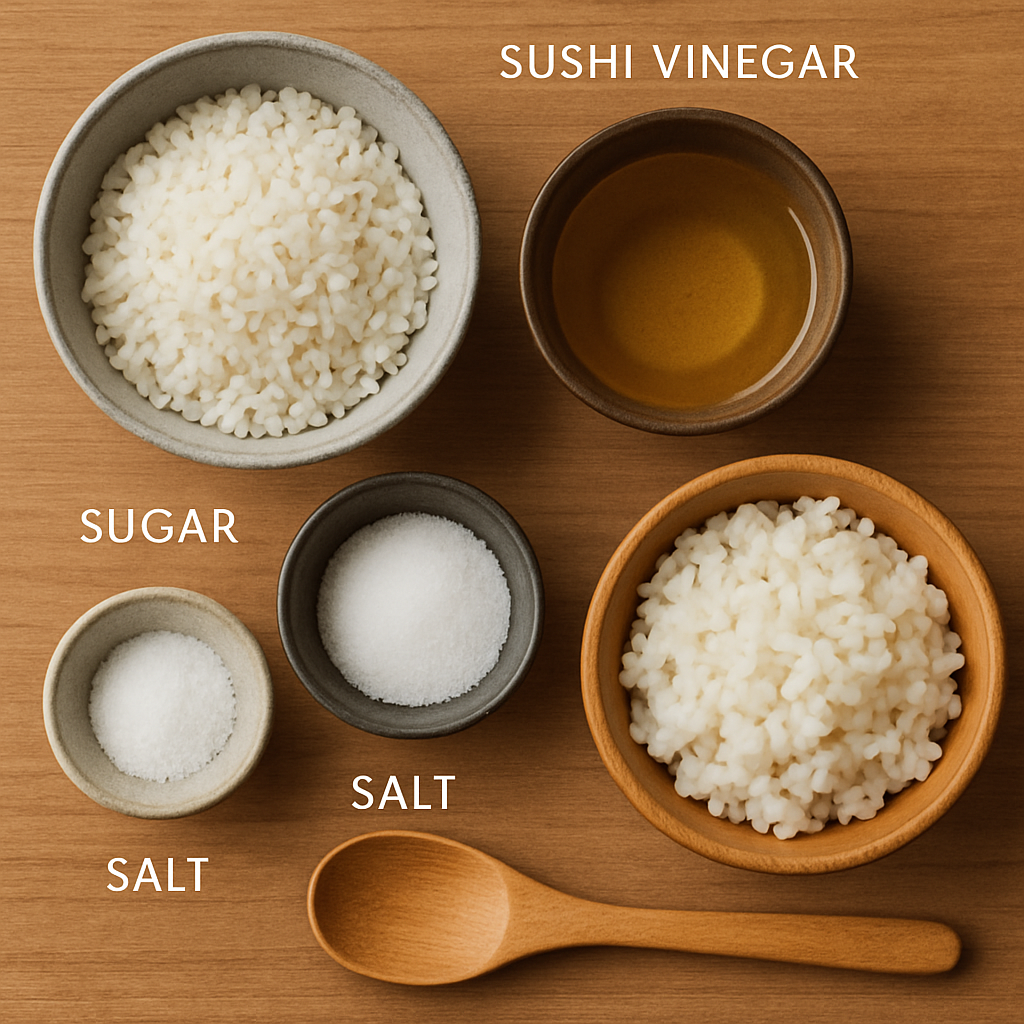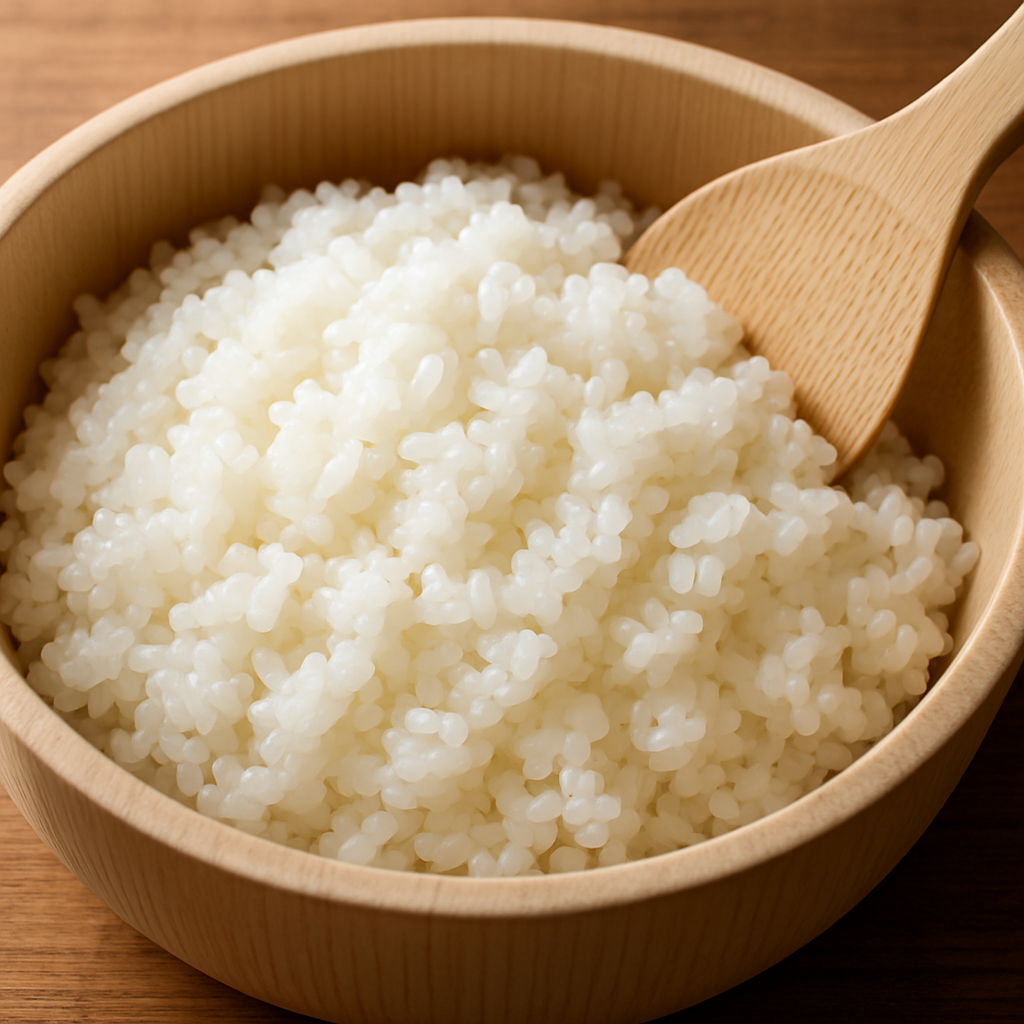When it comes to making sushi, the rice is as important as the fish. In fact, many sushi chefs believe that the quality and preparation of sushi rice are crucial to the overall sushi experience. The perfect sushi rice is sticky yet firm, seasoned to perfection, and serves as the ideal foundation for your sushi creations. In this guide, we’ll break down the steps for making sushi rice, discuss the ingredients you’ll need, and provide some tips to ensure your sushi rice turns out perfectly every time. Whether you’re using a rice cooker or the stove, we’ve got you covered. Mastering sushi rice will not only improve your sushi-making skills but also impress your family and friends with authentic flavors.
Sushi rice is a special kind of short-grain rice that becomes sticky when cooked. This stickiness is crucial as it helps the rice bind together, making it easier to roll and shape into nigiri. The rice is seasoned with a mix of rice vinegar, sugar, and salt, giving it that iconic sushi flavor that balances beautifully with the fresh fish and other ingredients. Understanding the characteristics of sushi rice is the first step toward mastering this essential component of Japanese cuisine.
The best rice for sushi is short-grain Japanese rice, also known as japonica rice. It’s essential to choose the right type to achieve the desired texture, as the wrong type of rice can result in a dry or overly sticky mess. If you’re shopping for rice, look for bags labeled as “sushi rice” or “Japanese sticky rice.” These varieties are specifically designed for sushi making and will give you the best results. While it might be tempting to use other types of rice, such as long-grain or basmati, these will not provide the same texture or flavor, and your sushi may not hold together properly.

Ingredients You’ll Need
- 2 cups of sushi rice
- 2 1/2 cups of water
- 1/2 cup of rice vinegar
- 2 tablespoons of sugar
- 1 tablespoon of salt
These ingredients form the base of sushi rice, and it’s important to measure them accurately. The balance of vinegar, sugar, and salt is what gives sushi rice its unique flavor profile, complementing the natural taste of the rice. Using high-quality rice vinegar is recommended for the best taste.
Washing the Rice
Before cooking, it’s important to rinse the rice thoroughly. This removes excess starch, which can make the rice too sticky and gummy. Place the rice in a bowl and cover it with cold water. Swirl the rice gently with your hand, then drain the water. Repeat this process 3-4 times until the water runs clear. This step is crucial in ensuring that your sushi rice has the right texture and is not overly sticky.
Cooking Sushi Rice in a Rice Cooker
- Measure the Ingredients: Place the rinsed rice and water into your rice cooker. Ensure that the water level is correct to avoid undercooked or mushy rice.
- Cook the Rice: Set your rice cooker to the white rice setting and let it cook. The rice cooker will automatically adjust the heat and time to ensure perfectly cooked rice.
- Prepare the Vinegar Mixture: While the rice is cooking, heat the rice vinegar, sugar, and salt in a small saucepan over medium heat. Stir until the sugar and salt dissolve. Do not let it boil, as boiling can alter the taste and concentration of the vinegar.
- Combine Rice and Vinegar: Once the rice is done, transfer it to a large bowl. Pour the vinegar mixture over the rice and use a spatula to gently fold it in. Be careful not to mash the rice. This step should be done while the rice is still hot to ensure the vinegar mixture is absorbed evenly.
Cooking Sushi Rice on the Stove
- Boil the Rice: Combine the rinsed rice and water in a pot. Bring to a boil over medium-high heat. It’s important to keep an eye on the pot to prevent the water from boiling over.
- Simmer: Once boiling, reduce the heat to low, cover, and let it simmer for 18-20 minutes. This allows the rice to cook gently and evenly.
- Rest the Rice: Remove the pot from the heat and let it sit, covered, for an additional 10 minutes. This resting period helps the rice to finish cooking and absorb any remaining moisture.
- Mix in the Vinegar: Follow the same steps as above to mix in the vinegar mixture. Use a gentle folding motion to incorporate the vinegar without crushing the grains.
Perfecting the Sushi Rice

Sushi Rice Water Ratio
The general water-to-rice ratio for sushi rice is 1.25:1. That means for every cup of sushi rice, use 1.25 cups of water. This ratio ensures the rice is neither too dry nor too mushy. Adjusting the water ratio can help you achieve the desired consistency based on your cooking method and personal preference.
How Much Sushi Rice Per Person
A good rule of thumb is to prepare about 1/3 cup of uncooked sushi rice per person. This will yield approximately 1 cup of cooked rice, which is typically enough for a single serving of sushi rolls or nigiri. However, if you’re planning a sushi party or have guests with hearty appetites, you may want to prepare a bit more.
Sushi Rice Seasoning
The seasoning is what transforms plain rice into sushi rice. Adjust the sugar and salt in the vinegar mixture to suit your taste. Some people prefer a sweeter rice, while others might like it more tangy. Remember, the goal is a balanced flavor that complements the fish and other ingredients. Don’t be afraid to experiment with the proportions to find your perfect blend.
Tips for Making the Best Sushi Rice
- Use Fresh Ingredients: Always use fresh rice vinegar and quality sushi rice for the best results. Stale ingredients can lead to a dull and lackluster flavor.
- Cool the Rice Properly: After seasoning, spread the rice out in a thin layer to cool. Use a fan or a piece of cardboard to fan the rice gently. This helps to achieve the glossy finish typical of sushi rice and prevents it from becoming overly sticky.
- Avoid Overmixing: When adding the vinegar mixture, fold the rice rather than stirring it to prevent it from becoming mushy. Overmixing can break the rice grains, resulting in a less desirable texture.
Common Questions About Sushi Rice
How Long to Cook Sushi Rice?
In a rice cooker, sushi rice typically takes about 20-30 minutes. The cooker will handle the timing, ensuring perfectly cooked rice each time. On the stove, cooking time is about 18-20 minutes, followed by a 10-minute rest. This method requires more attention to ensure the rice doesn’t burn.
How Much Rice Vinegar for Sushi Rice?
For 2 cups of uncooked rice, use 1/2 cup of rice vinegar. You can adjust this based on your taste preference. If you prefer a milder flavor, reduce the amount slightly, or add more for a stronger tang.
Can I Use a Rice Cooker for Sushi Rice?
Absolutely! A rice cooker is a convenient option for cooking sushi rice. It ensures even cooking and frees you up to prepare other ingredients. Many modern rice cookers also have settings specifically for sushi rice, making it even easier to achieve perfect results.
Conclusion
Mastering sushi rice is a rewarding skill that will elevate your homemade sushi to restaurant quality. By choosing the right rice, using the correct water ratio, and seasoning it well, you’ll be well on your way to making delicious sushi at home. Remember, practice makes perfect, so don’t be afraid to experiment and adjust the recipe to suit your taste. Each attempt will bring you closer to creating sushi rice that is perfectly tailored to your preferences.
Happy sushi making!









